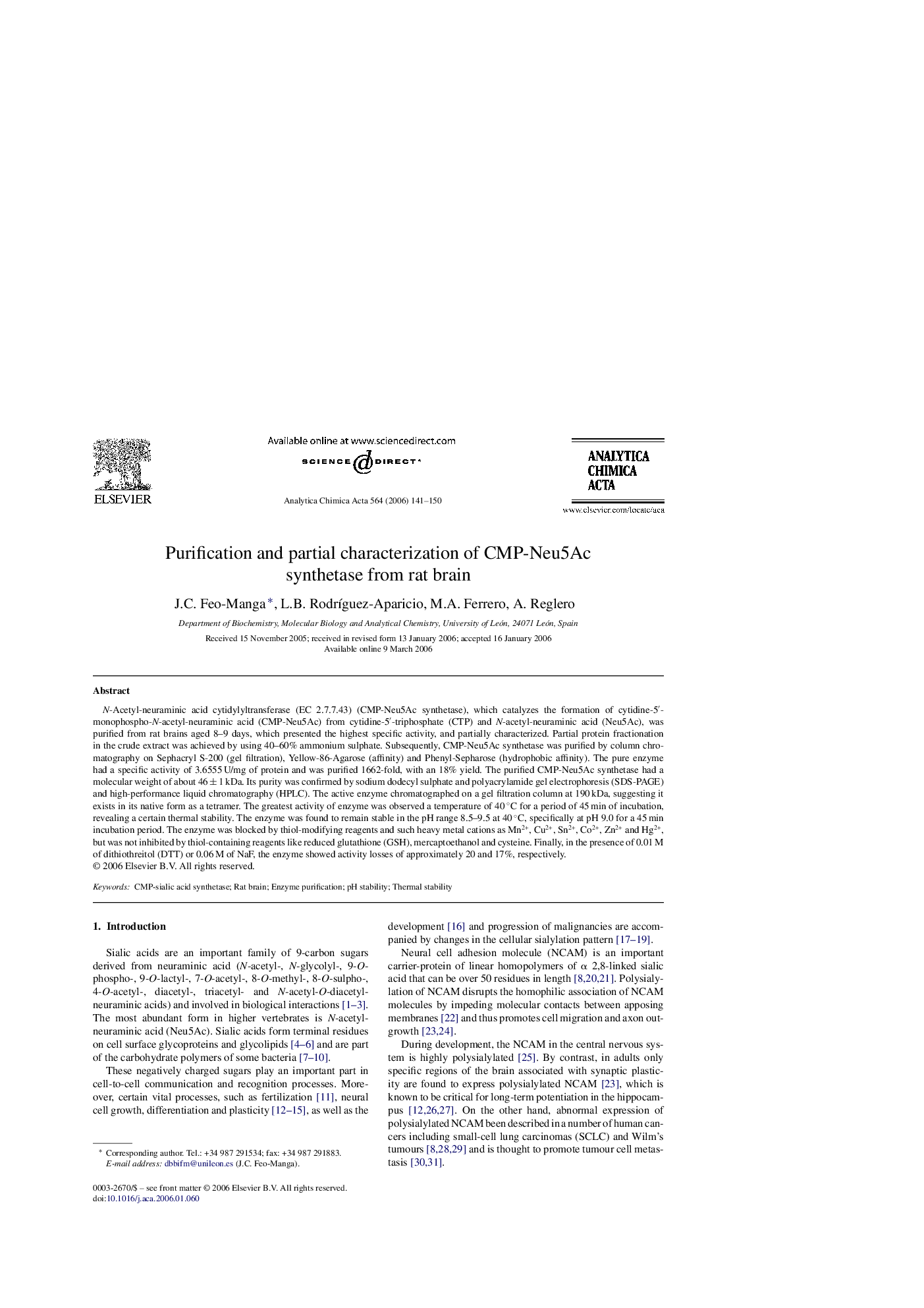| Article ID | Journal | Published Year | Pages | File Type |
|---|---|---|---|---|
| 1172217 | Analytica Chimica Acta | 2006 | 10 Pages |
Abstract
N-Acetyl-neuraminic acid cytidylyltransferase (EC 2.7.7.43) (CMP-Neu5Ac synthetase), which catalyzes the formation of cytidine-5â²-monophospho-N-acetyl-neuraminic acid (CMP-Neu5Ac) from cytidine-5â²-triphosphate (CTP) and N-acetyl-neuraminic acid (Neu5Ac), was purified from rat brains aged 8-9 days, which presented the highest specific activity, and partially characterized. Partial protein fractionation in the crude extract was achieved by using 40-60% ammonium sulphate. Subsequently, CMP-Neu5Ac synthetase was purified by column chromatography on Sephacryl S-200 (gel filtration), Yellow-86-Agarose (affinity) and Phenyl-Sepharose (hydrophobic affinity). The pure enzyme had a specific activity of 3.6555 U/mg of protein and was purified 1662-fold, with an 18% yield. The purified CMP-Neu5Ac synthetase had a molecular weight of about 46 ± 1 kDa. Its purity was confirmed by sodium dodecyl sulphate and polyacrylamide gel electrophoresis (SDS-PAGE) and high-performance liquid chromatography (HPLC). The active enzyme chromatographed on a gel filtration column at 190 kDa, suggesting it exists in its native form as a tetramer. The greatest activity of enzyme was observed a temperature of 40 °C for a period of 45 min of incubation, revealing a certain thermal stability. The enzyme was found to remain stable in the pH range 8.5-9.5 at 40 °C, specifically at pH 9.0 for a 45 min incubation period. The enzyme was blocked by thiol-modifying reagents and such heavy metal cations as Mn2+, Cu2+, Sn2+, Co2+, Zn2+ and Hg2+, but was not inhibited by thiol-containing reagents like reduced glutathione (GSH), mercaptoethanol and cysteine. Finally, in the presence of 0.01 M of dithiothreitol (DTT) or 0.06 M of NaF, the enzyme showed activity losses of approximately 20 and 17%, respectively.
Related Topics
Physical Sciences and Engineering
Chemistry
Analytical Chemistry
Authors
J.C. Feo-Manga, L.B. RodrÃguez-Aparicio, M.A. Ferrero, A. Reglero,
